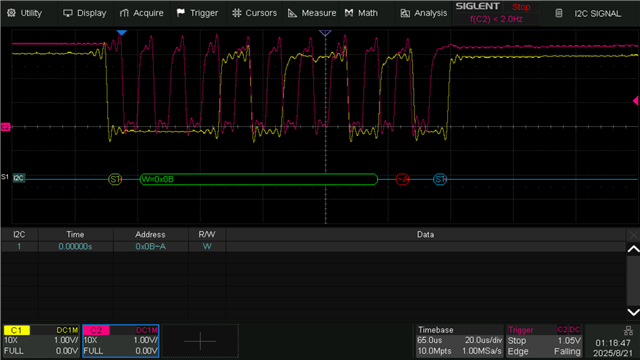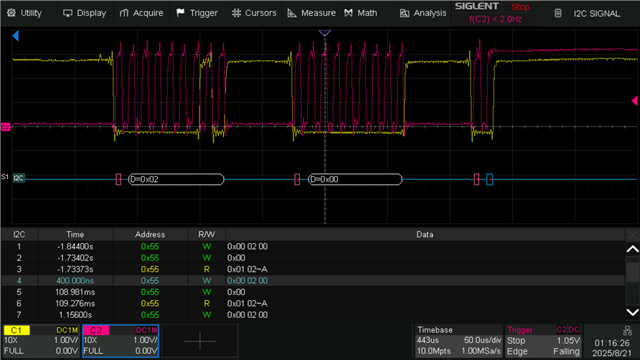Other Parts Discussed in Thread: BQSTUDIO, BQ34Z100-R2, EV2400
Tool/software:
I have been trying to write software to write a golden image. I copied the c library out of the communicating with the gauge document, and wrote the appropriate functions for i2c communication. I can read and write values, but the actual flash always fails soon after unsealing.
As a sanity check, got a brand new R2 chip, then dumped it as a golden image, and attempted to flash it to the same chip from bqstudio. This failed. It said there was no acknowledge from the device. What am I missing? There must be some other step I'm not seeing. Is there a document that explains this in detail? I'm using bqstudio 1.3.124 Build 3 11/11/2024.
Thanks



